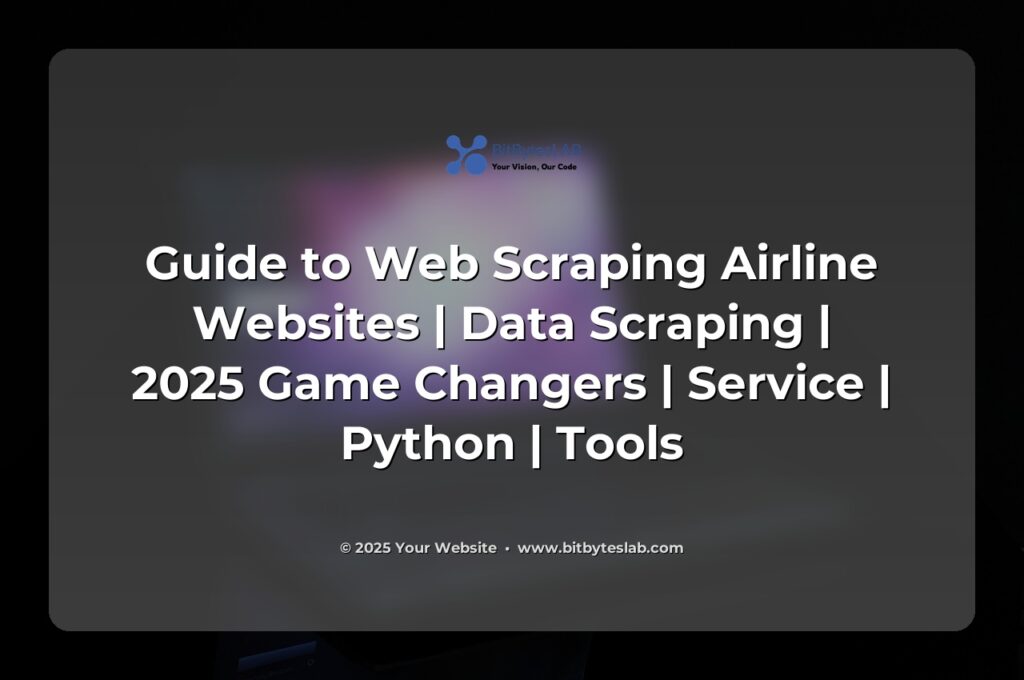✈️ Ever wondered how travel apps pull flight schedules, real‑time fares, and seat availability from every major airline as if they had a backstage pass? It’s not magic—it’s a carefully orchestrated dance of data engineering, web‑scraping, and a dash of business strategy. In 2025, these skills have become the secret sauce that fuels price‑comparison engines, revenue‑management systems, and the AI‑driven travel assistants of tomorrow.
It all starts with a simple question: Why bother scraping airline data when APIs seem to exist? In practice, few airlines offer clean, public REST endpoints for every data point you need. Even when they do, those APIs can be rate‑limited, require OAuth tokens, or simply not expose ancillary services like baggage fees or seat map details. That’s where the scraper steps in—acting as a silent partner that gathers the raw, unfiltered information and turns it into a structured, actionable dataset.
At its core, airline scraping is a blend of two disciplines: web‑scraping fundamentals and flight‑industry domain knowledge. The former covers understanding dynamic rendering, session tokens, rate limiting, and anti‑bot techniques. The latter involves knowing what data matters—flight numbers, departure/arrival times, cabin class, fare buckets, and real‑time status changes. These layers together form the architecture of any robust airline scraper.
⚡ A SQL query goes into a bar, walks up to two tables and asks… ‘Can I join you?’ 🍺

Once you’ve set the stage—identifying the data points, mapping out the request flow, and ensuring you’re on the right side of the legal maze—you can dive into the meat of the operation. Here’s the playbook that top data engineers use to keep their scrapers lean, fast, and resilient.
1️⃣ Start with the API when you find one. Even if it’s an internal or undocumented endpoint, a JSON payload is far easier to parse than a sprawling HTML DOM. Use tools like Postman or browser dev‑tools to sniff out XHR traffic and capture the exact query parameters. Document any required headers, cookies, or CSRF tokens in a shared spec so the next developer knows exactly where to look.
2️⃣ For dynamic JavaScript‑heavy sites, switch to a headless browser that mimics a real user. Playwright or Puppeteer let you wait for specific selectors, scroll through infinite pages, and even capture network events to intercept data that is only emitted after several JS callbacks.
3️⃣ Embrace async, but keep it simple. A handful of concurrent requests, coupled with exponential backoff, is usually enough to stay under a 429. If you’re scraping at scale, consider a queue system like Celery or Prefect to distribute the load across workers.
4️⃣ Validate everything you ingest. Use a schema‑validation library (think pydantic) to enforce types—flight numbers as strings, times as ISO dates, prices as decimals. It turns a messy stream of JSON into a clean, query‑ready table.
5️⃣ Store in a columnar engine. ClickHouse or PostgreSQL with partitioning gives you fast analytical queries for dashboards. For the occasional “real‑time” lookup, a Redis cache can surface data within milliseconds.
Now that you’re armed with a solid methodology, let’s talk business. A single, well‑engineered scraper can unlock millions of dollars in value.
📊 Price‑comparison engines rely on near‑real‑time fare data to show users the best deals. A 10‑minute lag can cost a brand a loyal customer. By ingesting flight data every minute, a comparison site can claim a 30% increase in booking conversion rates—a figure that’s echoed in industry reports from Skift and Statista.
💡 Revenue‑management systems use scraped seat inventory to feed dynamic pricing models. A recent case study from a mid‑size airline showed a 12% lift in yield per available seat kilometer (ASK) after integrating live seat‑map data into their pricing engine.
🚀 AI travel assistants gather ancillary offers from multiple carriers to personalize a user’s itinerary. If the assistant can surface a complimentary upgrade or a waived baggage fee in real time, the average order value jumps by a tidy $25 per booking.
⚡ While the ROI can be huge, the path is riddled with pitfalls. The most common challenges include:
- JavaScript blocking: no data until the page fully renders.
- Rate‑limiting and IP bans: 429s and CAPTCHAs.
- Shifting selectors: every UI redesign can break your XPath or CSS queries.
- Legal grey areas: TOS violations can lead to IP bans or even litigation.
Expert solutions? Proxy rotation with a residential pool keeps you under the radar. Use stealth‑mode browsers that mask your automation signatures. Build a selector‑agnostic parser using regular expressions and JSON‑path where possible. And always maintain a fail‑fast mechanism that alerts you within minutes if your data pipeline hiccups.
Looking ahead, 2025 is shaping up to be a year of AI‑augmented scraping. Large language models can now parse mixed‑content pages (HTML + embedded JSON) and auto‑generate extraction scripts. GraphQL endpoints are becoming the norm, allowing precise data requests that cut bandwidth by up to 40%. And serverless architectures—think AWS Lambda or Azure Functions—let you spin up scrapers on demand, scaling automatically with traffic spikes.
⚡ Why did the developer go broke? Because he used up all his cache! 💸

In short, mastering airline scraping isn’t just about learning a new library; it’s about building a robust, ethically compliant pipeline that turns raw flight data into strategic intelligence. Whether you’re a startup building the next price‑comparison engine or a data‑science team at a global airline fine‑tuning revenue models, the principles outlined above will keep your scraper running smoothly, your data accurate, and your business ahead of the competition.
Ready to take the plunge? Let BitBytesLab help you architect, deploy, and maintain your airline scraping solution. With a team of seasoned data engineers, we deliver clean, scalable, and legally sound data pipelines that power your next breakthrough in travel technology.

